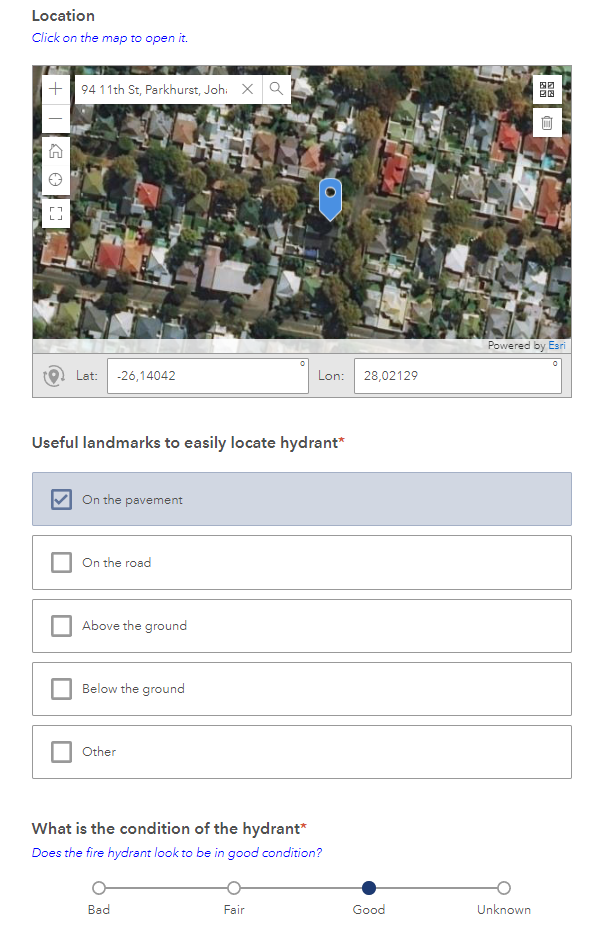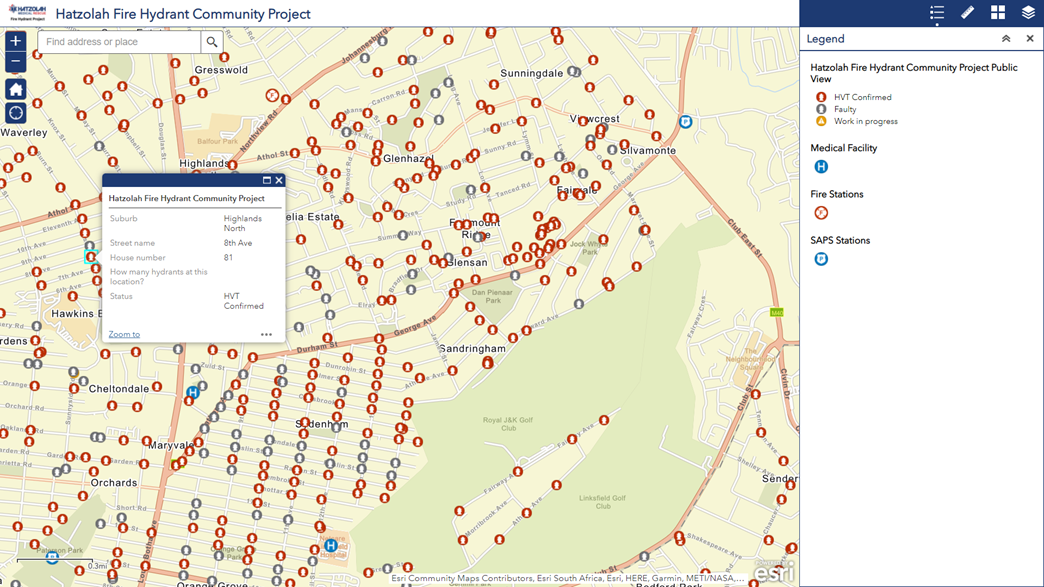USER STORY
Hatzolah Fire Hydrant Project
Over the years Hatzolah, a non-profit medical emergency rescue team have been called to many fire scenes to treat the victims of burns and smoke inhalation. Often while on the scene, they would watch the fire department struggle to locate the nearest suitable fire hydrant which is required as a source of water to fight the fire.
Hatzolah knew that they could not stand by any longer and took upon the task of trying to obtain the maps of the water lines and hydrant systems from the relevant municipal departments. After trying unsuccessfully to obtain this information for well over 18 months, Hatzolah finally decided that they were going to make a difference, even if they needed to start from the beginning, and so they did….
Communication was sent out from Hatzolah to the community asking residents to go for a walk and locate the fire hydrants in their area, and to post the location of the hydrant, images, and the hydrant’s condition to them. They had an astounding response from the public which formed the beginning of a map for them to work from. Esri South Africa approached Hatzolah with a possible solution using Esri desktop and mobile technology. The ‘mapping’ solution included survey forms, online maps and reporting dashboards for Hatzolah to work with. Esri South Africa provided guidance on best practices to capture the data, which enabled Hatzolah to set up their Hydrant Verification Team (HVT).
Phase two of the project was to issue Hatzolah HVT members with standpipes, hydrant keys and other hand tools which would be used throughout the project. With the help of the community, uploaded hydrant images and locations, the Hatzolah team went street by street, corner to corner locating hydrants in their area of operation using their new mapping solution. This allowed Hatzolah to easily locate the hydrants to test, and seamlessly provide progress and feedback via the dashboard.
Once HVT located various hydrants, they proceeded to physically mark the presence of the hydrants using customized weatherproof, highly reflective signage to help emergency services easily locate fire hydrants during an emergency. They cleaned out, serviced, and flushed the hydrants to ensure they were in the best operational state possible. It was alarming how many hydrants were not in a usable state, due to either being covered with debris, copper and metal parts being stolen, hydrants that were leaking, as well as those that were flooded and required suctioning tools to just get access to the hydrant couplings themselves. Hatzolah has successfully geolocated, plotted, tested, and reported back on the status of every single hydrant in their community.


Interestingly, Hatzolah found many hydrants that were stashed with drugs, broken beer bottles and clothing, and there were many hydrants that had hidden beehives inside. These were dreadful accidents waiting to happen. Beekeepers were contacted to clear the hives preventing potential harm to fire fighters who might open a hydrant unaware of the swarm of bees lurking within. The HVT crew would come back drenched and muddy, after working a long day in the baking sun or rain, successfully having verified many hydrants. Nothing was going to diminish the spirit of the team or prevent them for ensuring the community was kept safe – not even the small spider that caused a team member to require antibiotics.
Esri South Africa configured customizable applications, that are accessible through a browser and/or mobile device, that makes information available to emergency services such as the fire department, ZAKA fire containment unit, Joburg Water, and Hatzolah responders in a time of need. One can now simply arrive on scene, open an app or web link, use the address of the incident or current location to identify the closest hydrants, as well as the operational state of the hydrants to improve the firefighting operations.
In addition to the fire hydrants, Hatzolah have also captured all the fire stations, police stations, and hospitals in their community. They have already engaged with several Emergency Services in Johannesburg, as well as Cape Town and Durban to help populate their maps to further protect communities. The fire departments have been elated with the infrastructure, and Hatzolah are in the process of sharing their web application with them which will improve their service to save many homes and lives.
To date, Hatzolah have captured well over 2000 hydrants, and identified several hundred faulty hydrants requiring immediate repairs by the relevant municipal departments. They have engaged with them to get this done as soon as possible.

Fire Hydrant Reporting Dashboard
For more information contact [email protected]
